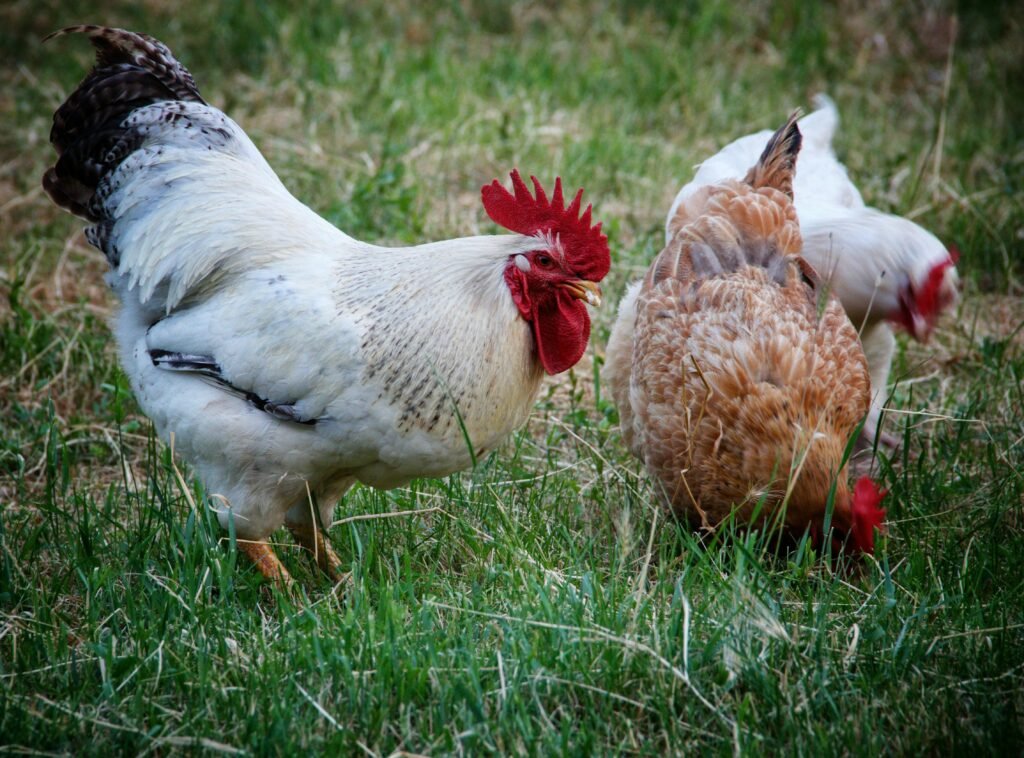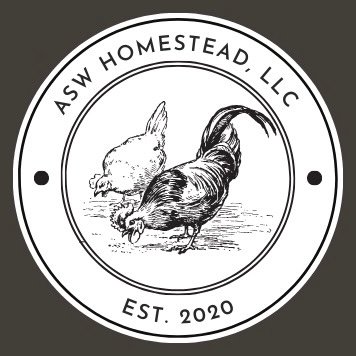Hello, friends! If you’ve been following along with my homesteading journey, you probably already know how much I love finding ways to work with nature. One of the best ways is through permaculture—a design philosophy that focuses on creating sustainable ecosystems. And guess what? Livestock plays a key role in a thriving permaculture system!

Incorporating animals into your permaculture design provides you with valuable resources like eggs, milk, and meat. And it helps improve your land by recycling nutrients, controlling pests, and even tilling the soil.
What is Permaculture?
Permaculture is all about creating sustainable, regenerative ecosystems that mimic natural processes. So, instead of relying on external inputs like synthetic fertilizers or pesticides, permaculture aims to create closed-loop systems.
In permaculture, everything has a purpose, and that includes livestock! Animals aren’t just a source of food or products—they’re active participants in maintaining the health of the land.
Choosing the Right Livestock for Your Permaculture System
The first step in incorporating livestock into your permaculture design is choosing the right animals. Not all livestock will be suitable for every homestead. It’s important to consider factors like climate, land size, and your goals.
Here are a few common livestock options and how they can fit into a permaculture system:
Chickens

Chickens are often called the “gateway” livestock for good reason—they’re easy to care for and offer multiple benefits in a permaculture system. And, they provide eggs, meat, and manure, and they’re also natural foragers that can help control pests and weeds.
- How to use them in permaculture: Chickens can be rotated through your garden or orchard to eat insects, scratch up the soil, and fertilize the land. They’re great at turning kitchen scraps and garden waste into rich manure that can be composted and added back to the soil.
Goats

Goats are hardy, adaptable animals that provide milk, meat, and even fiber (if you have certain breeds). And, they’re excellent foragers and can help manage overgrown areas of your property.
- How to use them in permaculture: Goats are fantastic for clearing brush, weeds, and invasive plants. They can be used to manage pastures or woodlots, reducing the need for mechanical tools. Plus, their manure is a valuable addition to your compost pile.
Sheep

Sheep are known for their ability to graze on grasses and plants, making them excellent at maintaining pastures. They also provide wool, milk, and meat.
- How to use them in permaculture: Sheep are perfect for rotational grazing systems, which help improve soil health by evenly distributing manure and preventing overgrazing. Also, their grazing habits encourage diverse plant growth and reduce the need for mowing.
Ducks

Ducks are a great addition to permaculture, especially if you have ponds or wet areas. They provide eggs, meat, and manure, and they’re natural pest control experts.
- How to use them in permaculture: Ducks love to eat slugs, snails, and other garden pests. You can allow them to forage in your garden or orchard, where they’ll help keep pests in check without damaging your plants (unlike chickens, ducks don’t scratch the soil). Ducks can also be integrated into water systems like ponds, where their droppings add nutrients to the water.
Pigs

Pigs are powerful animals that can help transform your land by rooting up soil and composting organic matter. They provide meat, and some breeds are even good for producing lard.
- How to use them in permaculture: Pigs are great for tilling up new garden beds or preparing land for planting. By rooting through the soil in search of food, they naturally turn over the earth, mix in organic matter, and help break down plant material. You can rotate pigs through designated areas to prepare the soil while also fertilizing it.
Integrating Livestock with Plant Systems
In permaculture, it’s all about finding ways for different elements to work together. And, when incorporating livestock think about how they can interact with your plants to create a mutually beneficial system.
Here are a few ways to integrate livestock with your plant systems:
Rotational Grazing and Crop Rotation
One of the best ways to integrate livestock into your permaculture system is through rotational grazing. This method involves moving animals from one area to another, allowing pastures or fields time to rest and regenerate between grazings.
- Benefits of rotational grazing:
- Prevents overgrazing and soil compaction
- Encourages diverse plant growth
- Improves soil health by evenly distributing manure
- Helps control weeds naturally
For example, you could rotate your sheep or goats through different paddocks, allowing them to graze on one section while other sections recover. Also, you can rotate chickens through garden beds after crops have been harvested. They’ll eat any leftover pests and weeds while fertilizing the soil.
Permaculture: Using Animals in Orchards or Food Forests

Another way to incorporate livestock is by using them in your orchards or food forests. Animals like chickens, ducks, or pigs can forage in these areas, eating fallen fruit, pests, and weeds while fertilizing the trees.
- Chickens in orchards: Chickens are excellent for controlling insect populations in orchards. They’ll eat pests like beetles and larvae that can harm fruit trees. Just make sure to move them regularly so they don’t compact the soil around the tree roots.
- Ducks in food forests: Ducks are a perfect fit for food forests, where they can eat snails and slugs while fertilizing the forest floor. Ducks also love wet areas, so if you have ponds or swales, they’ll naturally integrate into those systems.
Permaculture: Composting with Livestock

Livestock can also play a key role in composting, turning food scraps and plant waste into valuable manure that enriches your soil. Animals like chickens and pigs are natural composters—chickens scratch through compost piles, helping to aerate them. Pigs root through organic matter and speed up the decomposition process.
By adding livestock manure to your compost system, you’re creating a rich, balanced fertilizer that will help your plants thrive.
Permaculture: Designing for Animal Welfare

Incorporating livestock into your permaculture system provides many benefits for the land. However, it’s essential to prioritize the health and welfare of your animals, too. Healthy animals are the foundation of a thriving system.
Provide Shelter and Protection
First, make sure your livestock has access to shelter, whether it’s a chicken coop, barn, or portable shelter.
In permaculture, movable shelters like chicken tractors or mobile coops are popular because they allow you to rotate animals around the property while keeping them protected.
Ensure Access to Fresh Water and Food
Next, your animals should always have access to fresh water and nutritious food. While foraging and grazing provide much of their diet, you may need to supplement with additional feed or minerals, especially during the winter months or when your animals are growing.
Fencing for Safety and Mobility
Fencing is crucial for keeping your livestock safe from predators and for controlling their movement within the system. In permaculture, portable electric fencing is a great option for creating flexible grazing areas that can be moved as needed. This allows you to rotate your animals while keeping them secure.

Permaculture: Benefits of Incorporating Livestock
So, why should you incorporate livestock into your permaculture system? Here are a few benefits:
- Nutrient cycling: Livestock help close nutrient loops by recycling organic matter and returning valuable nutrients to the soil through their manure.
- Pest control: Animals like chickens and ducks naturally control pests in your garden or orchard without the need for chemical pesticides.
- Soil improvement: Grazing animals improve soil health by tilling, aerating, and fertilizing the land.
- Increased productivity: By integrating animals and plants, you’re creating a more diverse and productive system that maximizes your land’s potential.

As you plan your permaculture design, think about how livestock and systems can create a sustainable homestead. By working with nature and incorporating livestock thoughtfully, you’ll build a healthier, more productive homestead.
If you found this post helpful be sure to pin it on Pinterest!


